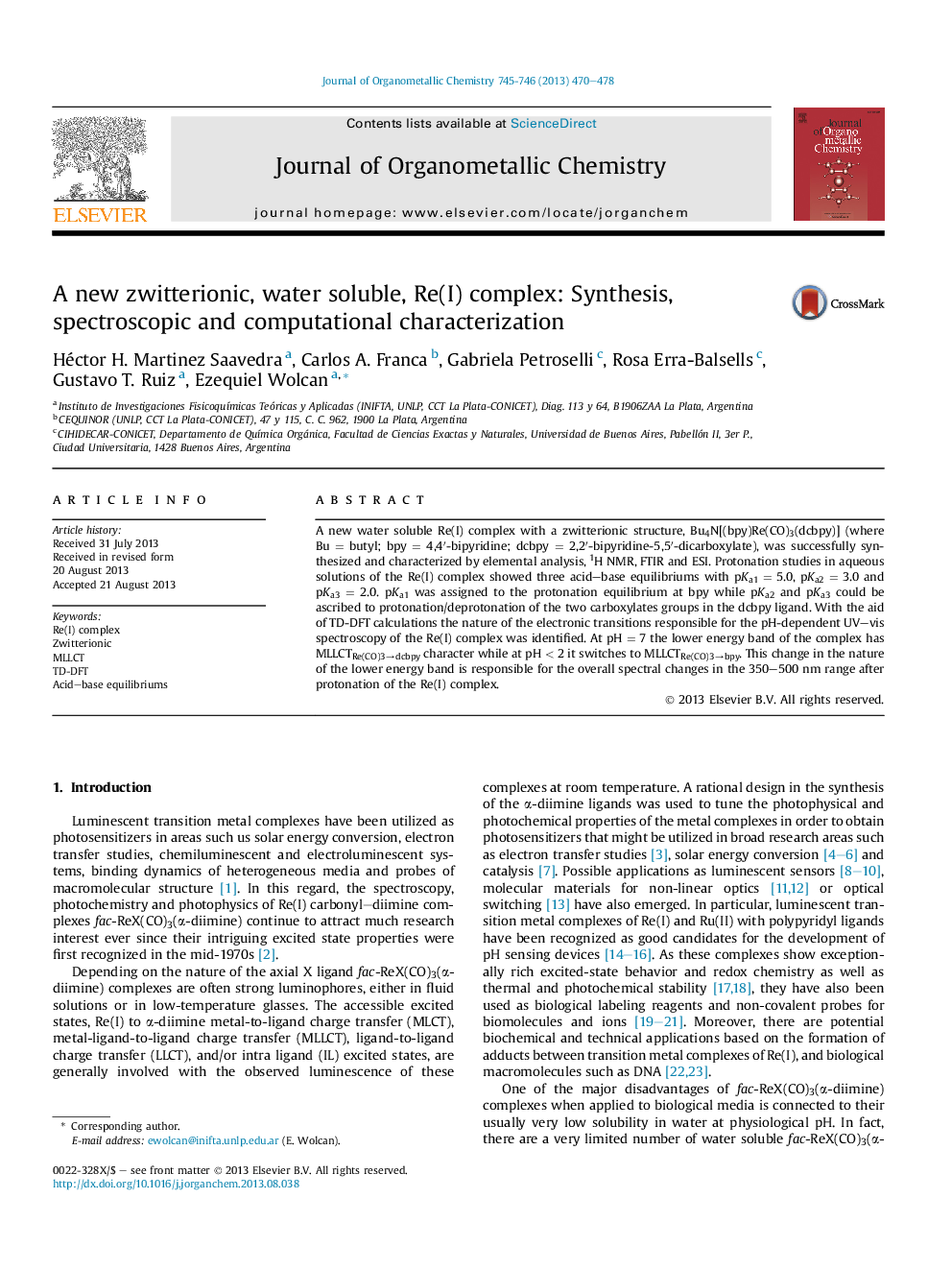| Article ID | Journal | Published Year | Pages | File Type |
|---|---|---|---|---|
| 1321564 | Journal of Organometallic Chemistry | 2013 | 9 Pages |
•A new water soluble Re(I) complex with a zwitterionic structure.•Three acid–base equilibriums with pKa1 = 5.0, pKa2 = 3.0 and pKa3 = 2.0.•MLLCT transitions responsible for the major pH-dependent spectral changes.
A new water soluble Re(I) complex with a zwitterionic structure, Bu4N[(bpy)Re(CO)3(dcbpy)] (where Bu = butyl; bpy = 4,4′-bipyridine; dcbpy = 2,2′-bipyridine-5,5′-dicarboxylate), was successfully synthesized and characterized by elemental analysis, 1H NMR, FTIR and ESI. Protonation studies in aqueous solutions of the Re(I) complex showed three acid–base equilibriums with pKa1 = 5.0, pKa2 = 3.0 and pKa3 = 2.0. pKa1 was assigned to the protonation equilibrium at bpy while pKa2 and pKa3 could be ascribed to protonation/deprotonation of the two carboxylates groups in the dcbpy ligand. With the aid of TD-DFT calculations the nature of the electronic transitions responsible for the pH-dependent UV–vis spectroscopy of the Re(I) complex was identified. At pH = 7 the lower energy band of the complex has MLLCTRe(CO)3→dcbpy character while at pH < 2 it switches to MLLCTRe(CO)3→bpy. This change in the nature of the lower energy band is responsible for the overall spectral changes in the 350–500 nm range after protonation of the Re(I) complex.
Graphical abstractThe new Re(I) complex showed three acid–base equilibriums with pKa1 = 5.0, pKa2 = 3.0 and pKa3 = 2.0. Two electronic transitions, MLLCT(Re(CO)3 → Lequatorial) and MLLCT(Re(CO)3 → Laxial), are responsible for the overall spectral changes in the 350–500 nm range after protonation of the Re(I) complex.Figure optionsDownload full-size imageDownload as PowerPoint slide
